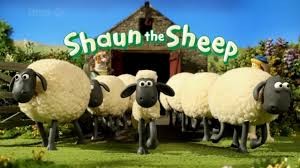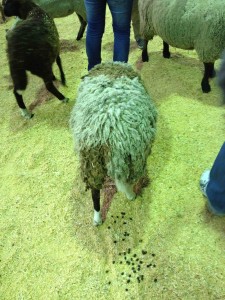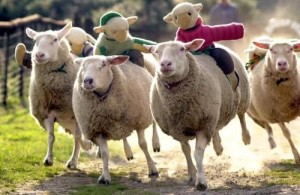On March 20, 1996, British Health Secretary Stephen Dorrell rose in the House to inform colleagues that scientists had discovered a new variant of Creutzfeldt-Jacob disease (CJD) in 10 victims, and that they could not rule out a link with consumption of beef from cattle with bovine spongiform encephalapthy (BSE), also known as mad cow disease.
 The announcement of March 20, 1996 was the culmination of 15 years of mismanagement, political bravado and a gross underestimation of the public’s capacity to deal with risk. More important than any of the several lessons to be drawn from the BSE fiasco was this: the risk of no-risk messages. For 10 years the British government and leading scientific advisors insisted there was no risk — or that the risk was so infintesimly small that it could be said there was no risk — of BSE leading to a similar malady in humans, CJD, even in the face of contradictory evidence. The no-risk message contributed to the devastating economic and social effects on Britons, a nation of beefeaters, the slaughter of over 1 million British cattle, and a decrease in global consumption of beef, especially in Japan, at a cost of billions of dollars.
The announcement of March 20, 1996 was the culmination of 15 years of mismanagement, political bravado and a gross underestimation of the public’s capacity to deal with risk. More important than any of the several lessons to be drawn from the BSE fiasco was this: the risk of no-risk messages. For 10 years the British government and leading scientific advisors insisted there was no risk — or that the risk was so infintesimly small that it could be said there was no risk — of BSE leading to a similar malady in humans, CJD, even in the face of contradictory evidence. The no-risk message contributed to the devastating economic and social effects on Britons, a nation of beefeaters, the slaughter of over 1 million British cattle, and a decrease in global consumption of beef, especially in Japan, at a cost of billions of dollars.
Part of that logic stemmed from the apparent absence of zoonotic or human effects from the sheep transmissible spongiform Encephalopathy, scrapie, which had been know in the UK for hundreds of years.
 European researchers have now reviewed the available evidence.
European researchers have now reviewed the available evidence.
The factors that modulate the transmissibility of Transmissible Spongiform Encephalopathies (TSE) and the approaches for the study of their zoonotic potential are reviewed. The paper ‘Evidence for zoonotic potential of ovine scrapie prions’ by Cassard et al. (2014) is scientifically appraised, focussing on the experimental design, the results and the conclusions.
The paper provides evidence in a laboratory experiment that some Classical scrapie isolates can propagate in humanised transgenic mice and produce prions that on second passage are similar to those causing one form of sporadic Creutzfeldt-Jakob disease (sCJD). It is concluded that the results from the study raise the possibility that scrapie prions have the potential to be zoonotic, but do not provide evidence that transmission can or does take place under field conditions.
The conclusions of the 2011 ECDC-EFSA ‘Joint Scientific Opinion on any possible epidemiological or molecular association between TSEs in animals and humans’ are reviewed in the light of the new scientific evidence available since its publication. This supports and strengthens the conclusions of that opinion with regard to the potential for some animal TSE to be zoonotic, but does not provide evidence of a causal link between Classical or Atypical scrapie and human TSE. Current evidence does not establish this link, and no consistent risk factors have been identified for sCJD.

The possibility of scrapie-related public health risks from the consumption of ovine products cannot be assessed. Recommendations are formulated on further studies and data that are needed to investigate the zoonotic potential of animal TSE and to estimate the amount of infectivity from TSE-infected products sourced from small ruminants and entering the food chain in the European Union.
Scientific Opinion on a request for a review of a scientific publication concerning the zoonotic potential of ovine scrapie prions
EFSA Journal 2015;13(8):4197 [58 pp.]. doi:10.2903/j.efsa.2015.4197
EFSA Panel on Biological Hazards (BIOHAZ)
http://www.efsa.europa.eu/en/efsajournal/pub/4197.htm?utm_source=feed&utm_medium=rss&utm_campaign=ej
http://www.efsa.europa.eu/en/efsajournal/pub/4197.htm?utm_source=feed&utm_medium=rss&utm_campaign=ej







 the previously unknown group Farmers’ Peace Corps kidnapped the 31 sheep slated for slaughter, leaving a note that read:
the previously unknown group Farmers’ Peace Corps kidnapped the 31 sheep slated for slaughter, leaving a note that read:.gif) premises that receive them will be subject to a quarantine and further regulatory action.
premises that receive them will be subject to a quarantine and further regulatory action. "While we recognize that disease control activities can be difficult on producers, the eradication of animal diseases, such as scrapie, is critical to ensuring the long-term sustainability of the sheep industry."
"While we recognize that disease control activities can be difficult on producers, the eradication of animal diseases, such as scrapie, is critical to ensuring the long-term sustainability of the sheep industry."